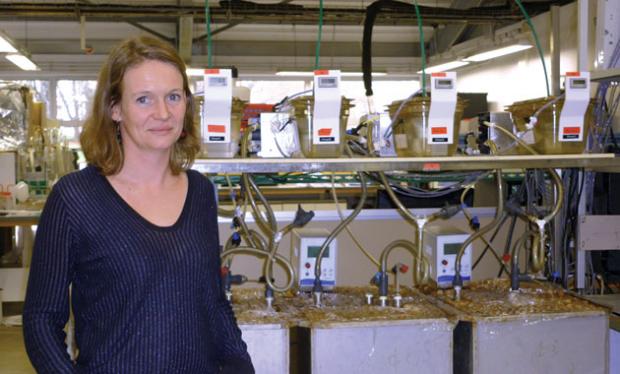The DECISIVE project coordinator, Anne Tremier of IRSTEA, gave an interview to a regional scientific journal in Brittany, France Espace des Sciences. We now bring you the interview in English.
We ship most of our waste outside the cities while we heat ourselves and provide electricity with the energy that has traveled hundreds of kilometers. To reduce these flows, an Irstea team from Rennes coordinates a project on the valuation of close biowaste since 2016 titles DECISIVE. It includes thirteen public and private partners from six European countries, including the Autonomous University of Barcelona (Spain), the University of Aarhus (Denmark) and the Technical University of Hamburg (Germany). “There are at least 30% of organic waste, mainly from food, in waste bins, that is to say outside of the packages that are supported by the sorting,” says Anne Tremier.
Nothing is lost
One of the Rennes project team’s contributions is to determine the ideal settings to produce methane. Anaerobic digestion is based on the degradation of organic matter by microorganisms which produce methane and carbon dioxide in the absence of oxygen. It requires particular heat.
“Two temperatures are used by existing biogas: around 37 ° C or 55 ° C. The second option produces biogas faster but requires more energy. We started on the first solution, which has an interesting performance”. The methane product is used to provide 80% of the heat, part of which will be consumed by the process, and 10% of electricity. Fifty tons of biowaste may, for example, light and heat a greenhouse for a year. Four biogas simulators are currently in operation in the laboratory of the institute to test different factors improving performance: change in temperature a few degrees, fermentation time, amount of assimilated waste …
Everything changes
Once turned into methane, the story does not end there: the solid part of the biogas residue is used to cultivate bacteria of interest by fermentation on solid substrate. “Tests were done by the Autonomous University of Barcelona to find effective microorganisms on waste. The bacterium Bacillus thuringiensis has been used. It is a natural biopesticide, which is already grown, but generally on the biomass produced especially for this purpose, “explains Anne Tremier. Finally, what is left after these operations will join the compost. “The idea is to maximize the value of the product, as opposed to direct composting or incineration. ”
The researchers from Rennes are also developing a decision support tool to help communities put the biogas and size the collection network “Below fifty tonnes per year, we calculated that biowaste produces less energy than is consumed for anaerobic digestion, “explains the scientist. In addition to individuals, catering establishments are interesting waste suppliers. The tool will, for example, to determine where to place a digester to have enough biowaste within two kilometers.
Put into practice
The project should move to the concrete phase at the end of the year, with the installation of two demonstrators. One will be located near an urban farm project partner, in Ecully, near Lyon. The other will be on the campus of the Autonomous University of Barcelona. “The management of the university has a fairly advanced waste reduction approach. With over 30,000 students, ten university restaurants and housing, the campus is representative of a type of area that might be interested in the microméthanisation “says Anne. Applications for authorization are ongoing.
“Whatever their size, biogas must, in France, subject to ICPE declaration, which is heavy,” she says. This is both due to security rules for hazardous areas and health risks of spreading diseases from animal waste, which must be pre-treated. But a new specific regulation for small installations is expected, which should facilitate the implementation of micro-scale anaerobic digesters. See you in 2020 to disseminate the findings of the project!

